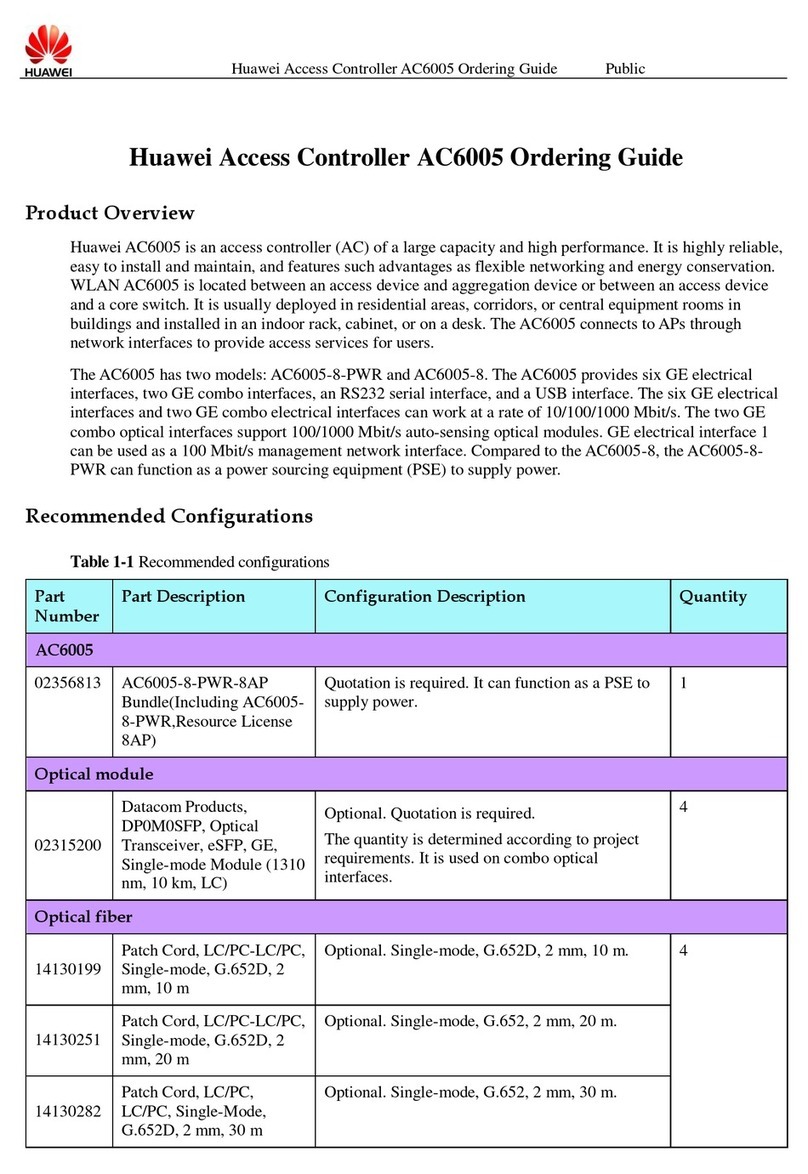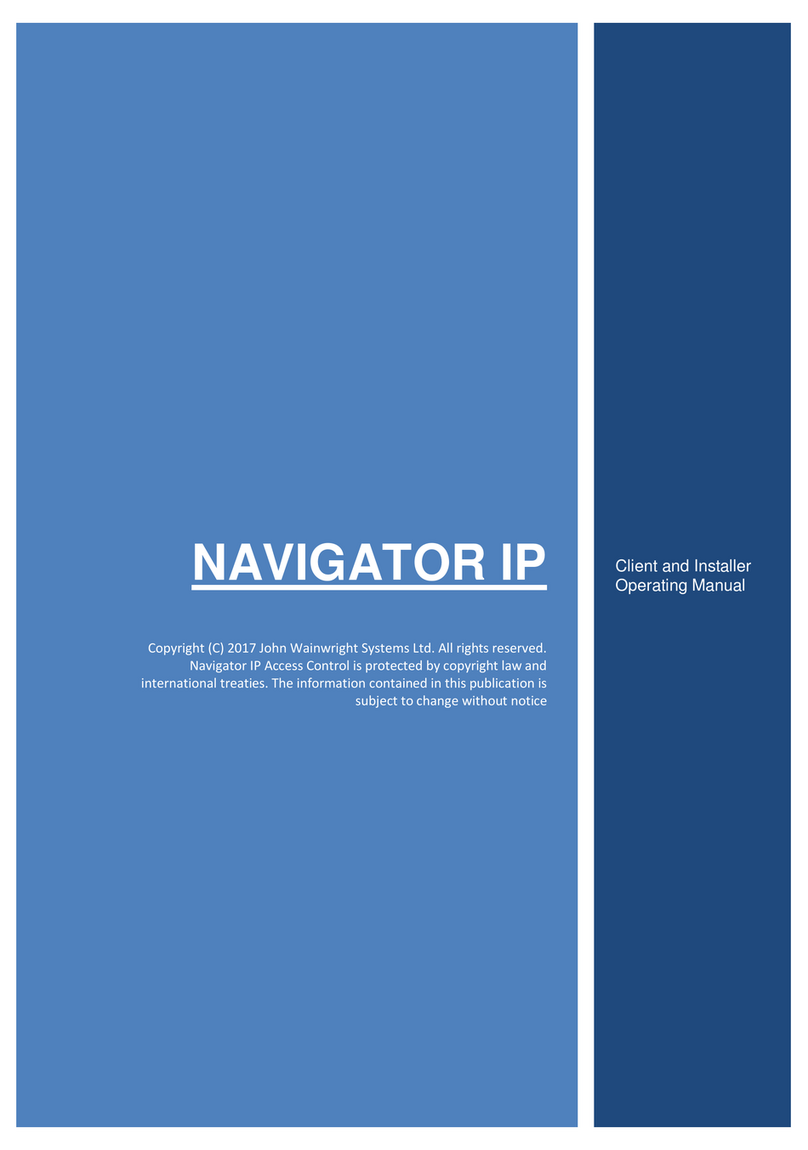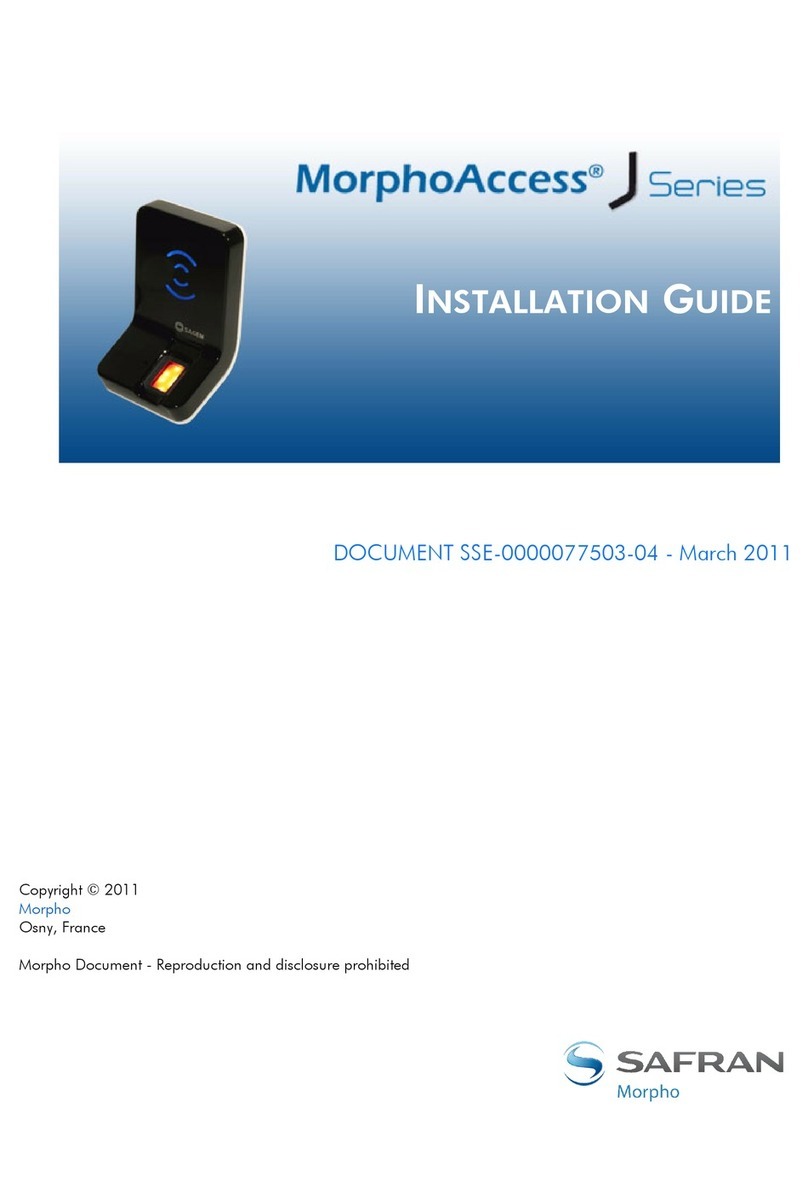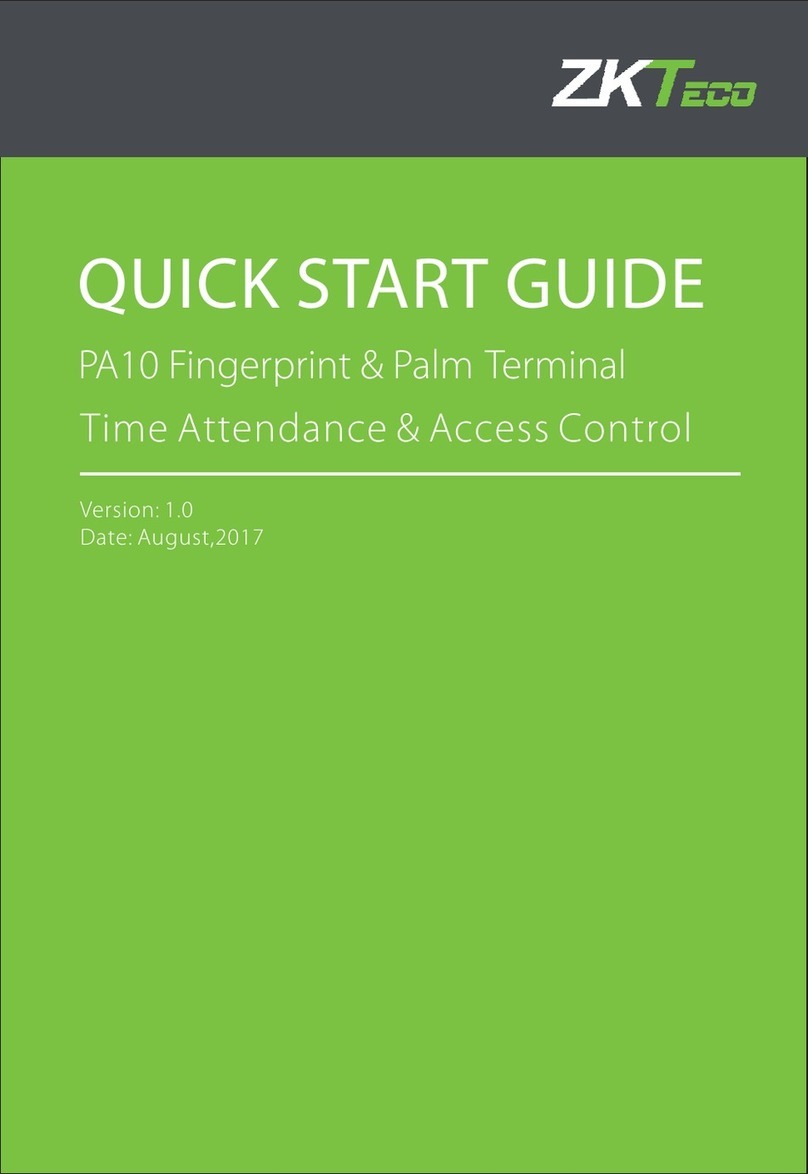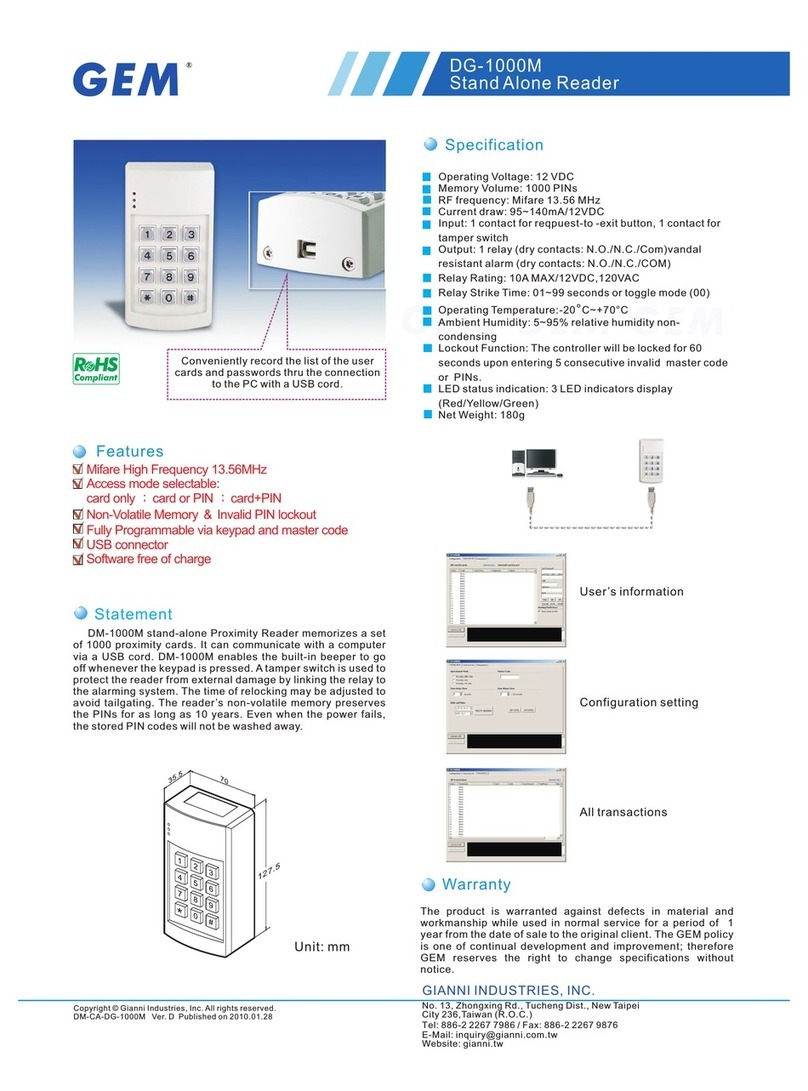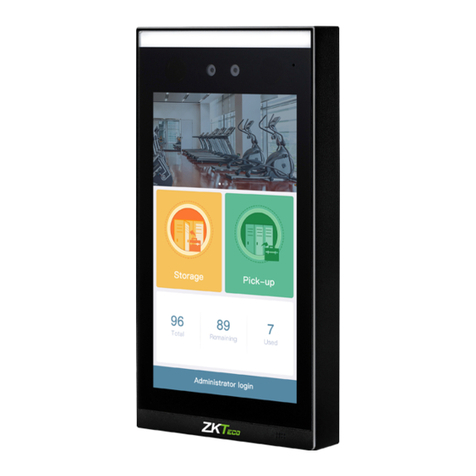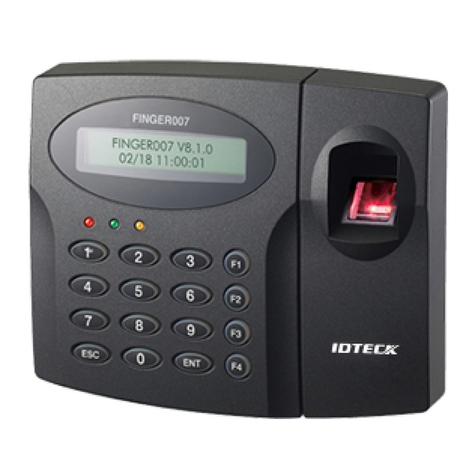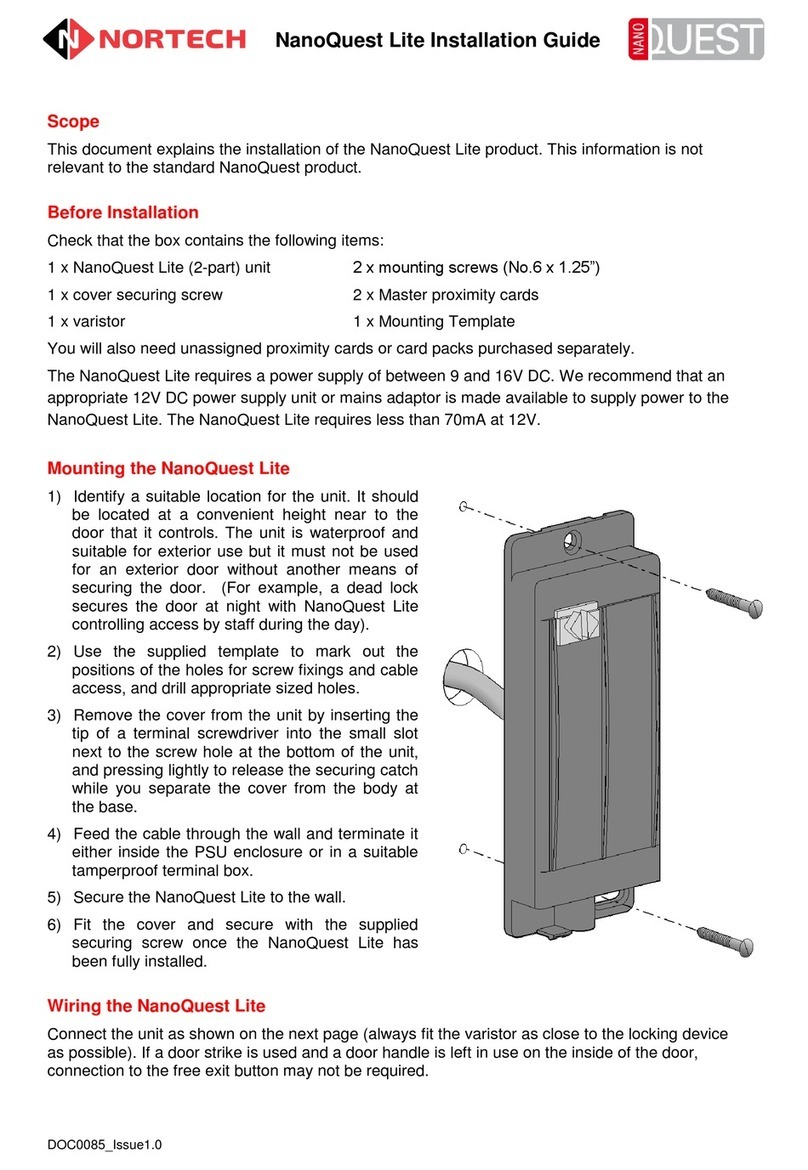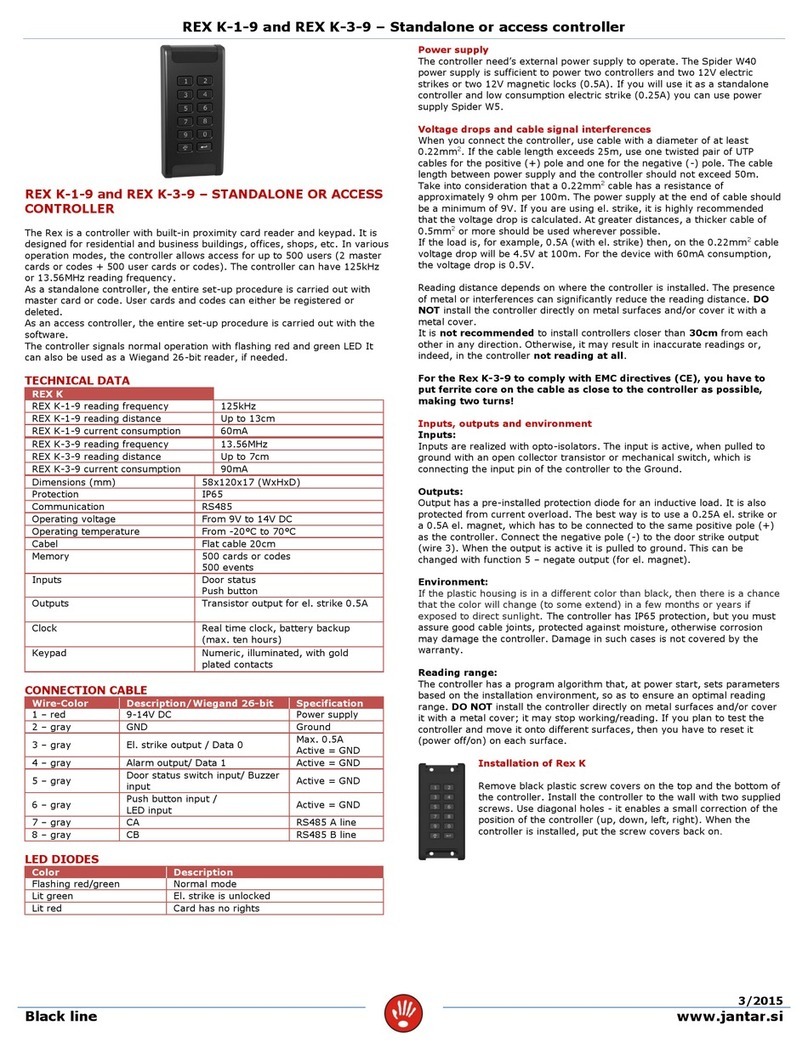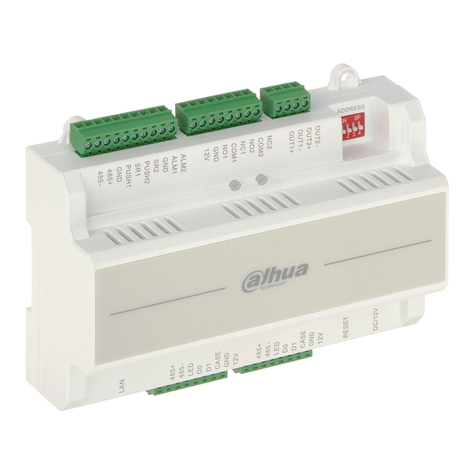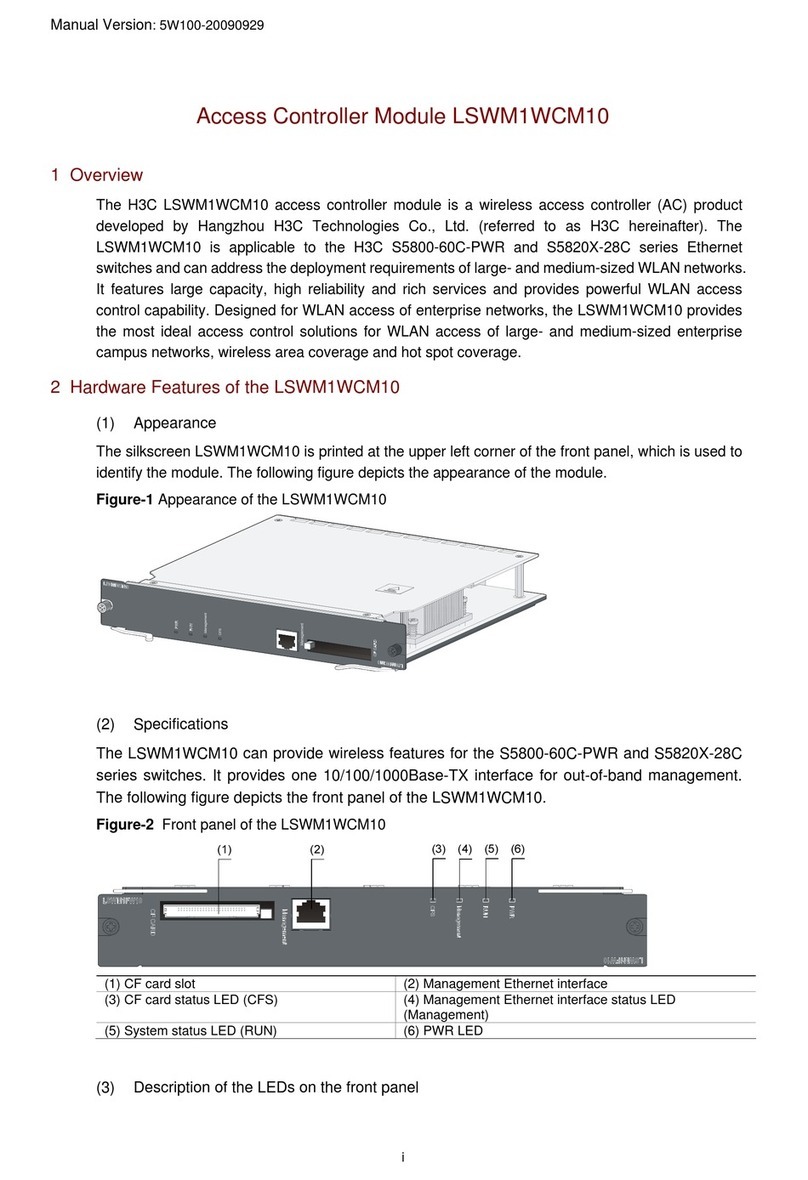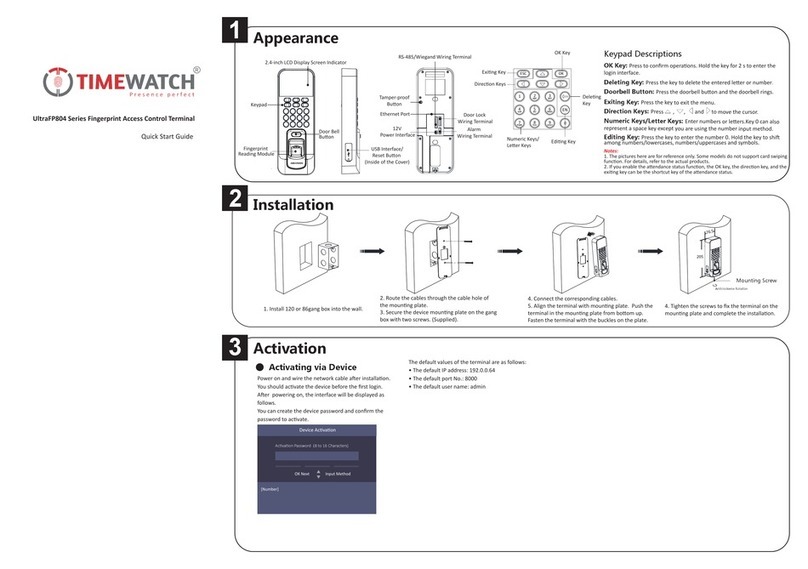Huawei AC6605 User manual

AC6605 Access Controller
V200R001C00
Dual-Link Backup White Paper
Issue
01
Date
2012-05-30
HUAWEI TECHNOLOGIES CO., LTD.

Issue 01 (2012-05-30)
Huawei Proprietary and Confidential
Copyright © Huawei Technologies Co., Ltd.
i
Copyright © Huawei Technologies Co., Ltd. 2012. All rights reserved.
No part of this document may be reproduced or transmitted in any form or by any means without prior
written consent of Huawei Technologies Co., Ltd.
Trademarks and Permissions
and other Huawei trademarks are trademarks of Huawei Technologies Co., Ltd.
All other trademarks and trade names mentioned in this document are the property of their respective
holders.
Notice
The purchased products, services and features are stipulated by the contract made between Huawei and
the customer. All or part of the products, services and features described in this document may not be
within the purchase scope or the usage scope. Unless otherwise specified in the contract, all statements,
information, and recommendations in this document are provided "AS IS" without warranties, guarantees or
representations of any kind, either express or implied.
The information in this document is subject to change without notice. Every effort has been made in the
preparation of this document to ensure accuracy of the contents, but all statements, information, and
recommendations in this document do not constitute a warranty of any kind, express or implied.
Huawei Technologies Co., Ltd.
Address:
Huawei Industrial Base
Bantian, Longgang
Shenzhen 518129
People's Republic of China
Website:
http://www.huawei.com
Email:
support@huawei.com

AC6605 Access Controller
Dual-Link Backup White Paper
About This Document
Issue 01 (2012-05-30)
Huawei Proprietary and Confidential
Copyright © Huawei Technologies Co., Ltd.
ii
About This Document
Purpose
This document describes the dual-link backup technology of the AC6605. The dual-link
backup technology provides high reliability between important network nodes to ensure
service availability.
This document covers the mechanism and networking modes of dual-link backup supported
by the AC6605, and provides configuration examples for typical dual-link backup
applications.
Intended Audience
This document is intended for:
Data configuration engineers
Commissioning engineers
Network monitoring engineers
System maintenance engineers
Symbol Conventions
The symbols that may be found in this document are defined as follows.
Symbol
Description
Alerts you to a high risk hazard that could, if not avoided,
result in serious injury or death.
Alerts you to a medium or low risk hazard that could, if not
avoided, result in moderate or minor injury.
Alerts you to a potentially hazardous situation that could, if not
avoided, result in equipment damage, data loss, performance
deterioration, or unanticipated results.
Provides a tip that may help you solve a problem or save time.
Provides additional information to emphasize or supplement
important points in the main text.

AC6605 Access Controller
Dual-Link Backup White Paper
About This Document
Issue 01 (2012-05-30)
Huawei Proprietary and Confidential
Copyright © Huawei Technologies Co., Ltd.
iii
Change History
Changes between document issues are cumulative. The latest document issue contains all the
changes made in earlier issues.
Issue 01 (2012-05-30)
This is the first formal issue.

AC6605 Access Controller
Dual-Link Backup White Paper
Contents
Issue 01 (2012-05-30)
Huawei Proprietary and Confidential
Copyright © Huawei Technologies Co., Ltd.
iv
Contents
About This Document ............................................................................................................... ii
1 Dual-Link Backup.................................................................................................................... 1
1.1 Introduction to Dual-Link Backup.............................................................................................................. 1
1.2 Availability................................................................................................................................................ 2
1.3 Principles .................................................................................................................................................. 2
1.3.1 Dual-Link Backup Mechanism.......................................................................................................... 2
1.3.2 AP Login Process.............................................................................................................................. 3
1.3.3 STA Login Process............................................................................................................................ 6
1.3.4 Active/Standby Switchover and Revertive Switchover ....................................................................... 6
1.3.5 Loop Prevention in VLANs............................................................................................................... 7
1.3.6 Dual-Link Backup in Layer 2 Networking and Configuration Notes .................................................10
1.3.7 Dual-Link Backup in Layer 3 Networking and Configuration Notes .................................................18
1.4 Applications .............................................................................................................................................29
1.4.1 Direct Forwarding in Layer 3 Chain Networking ..............................................................................29
1.4.2 Tunnel Forwarding in Layer 2 Branched Networking........................................................................33

AC6605 Access Controller
Dual-Link Backup White Paper
1Dual-Link Backup
Issue 01 (2012-05-30)
Huawei Proprietary and Confidential
Copyright © Huawei Technologies Co., Ltd.
1
1 Dual-Link Backup
About This Chapter
1.1 Introduction to
1.2 Availability
1.3 Principles
1.4 Applications
1.1 Introduction to Dual-Link Backup
Definition
Dual-link backup is implemented by deploying a standby AC at the same layer as the active
AC. The standby AC has the same configuration as the active AC. When the active AC fails,
the backup AC starts to manage services quickly.
Purpose
An AC usually controls thousands of APs and tens of thousands of STAs; therefore, the AC
must be highly reliable. Configuring dual-link backup can ensure stable service operating on a
WLAN network.
Benefits
The dual-link backup technology provides high reliability between important network nodes
to ensure service availability.

AC6605 Access Controller
Dual-Link Backup White Paper
1Dual-Link Backup
Issue 01 (2012-05-30)
Huawei Proprietary and Confidential
Copyright © Huawei Technologies Co., Ltd.
2
1.2 Availability
Version Support
Product
Product Version
AC6605
V200R001C00
Constraints
Dual-link backup has the following constraints:
The active and standby ACs must have the same WLAN service configuration.
APs must be able to communicate with both the active and standby ACs. When APs
communicate with the ACs through a Layer 2 network, APs must belong to the same
VLAN as the ACs, and AP IP addresses must be on the same network segment as AC IP
addresses.
If the active AC functions as a DHCP server to allocate IP addresses to APs, configure
static IP addresses for APs or configure an IP address pool only on the active AC. If you
need to configure IP address pools on both ACs, ensure that the IP address pools on the
two ACs do not overlap. Otherwise, IP address conflicts may occur.
The ACs cannot allocate IP addresses to STAs or work as gateways for STAs.
1.3 Principles
1.3.1 Dual-Link Backup Mechanism
Dual-link backup is enabled on active and standby ACs so that APs can establish Control and
Provisioning of Wireless Access Points (CAPWAP) tunnels with both ACs. The status of an
AP is displayed as normal on the active AC and displayed as standby on the standby AC.
When both the active and standby ACs are working properly, only the active AC manages
services of APs and delivers configurations to the APs.
An AP sends Echo packets to monitor the status of the links connected to the ACs. When the
active AC is unavailable because of an AC fault or network failure, an AP detects that the link
connected to the active AC is Down, and the AP status on the standby AC changes from
standby to normal. The standby AC then delivers configurations to the AP and manages
services of the AP.
When the AP detects that the link connected to the active AC recovers, it switches service
traffic back to the active AC within 500 seconds if revertive switching is enabled. After the
switchover, the AP status is displayed as normal on the active AC and displayed as standby on
the standby AC. If revertive switching is disabled, the AP still sends service traffic to the
standby AC.
As shown in Figure 1-1, the APs set up CAPWAP tunnels with the active AC (AC1) and
standby AC (AC2) simultaneously when they go online. The APs and ACs exchange
handshake packets to monitor the link status. When the APs detect that the links connected to
AC1 fail, they switch service traffic to AC2. As they have established CAPWAP tunnels with
AC2, service switching time is reduced. However, users need to go online again after the

AC6605 Access Controller
Dual-Link Backup White Paper
1Dual-Link Backup
Issue 01 (2012-05-30)
Huawei Proprietary and Confidential
Copyright © Huawei Technologies Co., Ltd.
3
switchover. Users that were authenticated using open system or WEP authentication do not
need to go online again.
Figure 1-1 Dual-link backup
AC1 AC2
Aggregation
switch
Access switch
AP AP
STA
CAPWAP primary link
CAPWAP backup link
Impact of an active/standby switchover on services is as follows:
During an active/standby switchover, services are interrupted for a period because an AP
needs to detect the failure of primary link using CAPWAP heartbeat packets. The service
interruption time is determined by the heartbeat interval (3s to 300s) and number of
detection attempts (2 to 120). Users cannot use Internet services, but they are still online
and do not need to be reauthenticated after the switchover is complete. The AP status on
the standby AC changes from standby to normal after the AP detects a failure on the
primary link.
When traffic is switched back from the standby AC to the active AC, services are not
affected because both the primary link and backup link are working properly. Users are
still online and do not need to be reauthenticated after the switchover is complete.
1.3.2 AP Login Process
After an AP is powered on, it uses DHCP to obtain its own IP address and IP addresses of the
active and standby ACs. The AP then discovers the ACs and establishes primary and backup
links with the ACs to implement dual-link backup.
If neither of the active and standby ACs is used as a DHCP server, you only need to set
Option 43 to IP addresses of the active and standby ACs on the DHCP server and do not need
to consider the IP address lease. The following describes the AP login process when an AC
functions as a DHCP server.

AC6605 Access Controller
Dual-Link Backup White Paper
1Dual-Link Backup
Issue 01 (2012-05-30)
Huawei Proprietary and Confidential
Copyright © Huawei Technologies Co., Ltd.
4
Obtaining IP Addresses on a Layer 2 Network
1. An AP broadcasts a DHCP Discovery packet with Option 60 as Huawei AP.
2. The two ACs receive the DHCP Discovery packet and both reply with a DHCP Offer
packet.
3. After receiving the two DHCP Offer packets, in the Discovery phase, the AP sends
Discover Request messages to both ACs. As long as the ACs are working properly, they
will return Discover Response messages to the AP. The Discover Response messages
contain the dual-link backup flag, priorities, workload, and IP addresses of the ACs.
After receiving the Discover Response messages, the AP compares information in the
packets and selects an AC as the DHCP server, and then sends a DHCP Request packet
to the selected AC.
4. The selected AC sends a DHCP ACK packet to the AP. In the DHCP ACK packet, the
Option 43 field contains the IP addresses of the two ACs, and the Option 51 field
contains a long IP address lease. (The 32-bit Option 51 field can specify the longest lease
of 136 years.)
5. After receiving the DHCP ACK packet, the AP obtains its own IP address and IP
addresses of the active and standby ACs. The IP address lease is very long so that the AP
does not need to extend the lease. If no Option 43 is configured on the ACs, the AP can
broadcast a DHCP Request to discover ACs.
Obtaining IP Addresses on a Layer 3 Network
1. An AP broadcasts a DHCP Discovery packet with Option 60 as Huawei AP.
2. A DHCP relay agent is deployed between the ACs and APs, and the primary and
secondary DHCP servers are configured on the active and standby ACs. The DHCP relay
agent sends a DHCP Discovery packet to the active AC (in active/standby mode) or to
both the ACs (in load balancing mode).
3. If the DHCP relay agent works in active/standby mode, the active AC receives the
DHCP Discovery packet and replies with a DHCP Offer packet. If the DHCP relay agent
works in load balancing mode, both ACs receive the DHCP Discovery packet and reply
with a DHCP Offer packet.
4. The DHCP relay agent forwards the DHCP Offer packets to the AP.
5. After receiving the two DHCP Offer packets, in the Discovery phase, the AP sends
Discover Request messages to both ACs. As long as the ACs are working properly, they
will return Discover Response messages to the AP. The Discover Response messages
contain the dual-link backup flag, priorities, workload, and IP addresses of the ACs.
After receiving the Discover Response messages, the AP compares information in the
packets and selects an AC as the DHCP server, and then sends a DHCP Request packet
to the selected AC.
6. The DHCP relay agent forwards the DHCP Request packet to the selected AC.
7. The selected AC sends a DHCP ACK packet to the AP. In the DHCP ACK packet, the
Option 43 field contains the IP addresses of the two ACs, and the Option 51 field
contains a long IP address lease. (The 32-bit Option 51 field can specify the longest lease
of 136 years.)
8. The DHCP relay agent forwards the DHCP ACK packet to the AP.
9. After receiving the DHCP ACK packet, the AP obtains its own IP address and IP
addresses of the active and standby ACs. The IP address lease is very long so that the AP
does not need to extend the lease.
The AP then discovers ACs and set up tunnels with the ACs.

AC6605 Access Controller
Dual-Link Backup White Paper
1Dual-Link Backup
Issue 01 (2012-05-30)
Huawei Proprietary and Confidential
Copyright © Huawei Technologies Co., Ltd.
5
Setting Up the First Tunnel
1. After the AP obtains its own IP address and IP addresses of the two ACs, it sends a
Discover Request packet to both ACs to discover ACs. If the AP obtains only its own IP
address, it broadcast a Discover Request packet to discover ACs.
2. If the ACs are working properly, they send a Discover Response packet with the
dual-link backup flag, workload, and priority to the AP.
3. After receiving the Discover Response packets, the AP compares the priorities and IP
addresses of the ACs to select an AC and establishes a CAPWAP tunnel with the
selected AC. The AC with a smaller priority value becomes the active AC. If the ACs
have the same priority value, the AC with a lower workload becomes the active AC. If
their workloads are also the same, the AC with smaller IP address becomes the active
AC.
If an AC fails to return a Discover Response packet, the AP selects the other AC to set up the CAPWAP
tunnel. The tunnel set up first may not be the primary tunnel. The AP will determine the primary and
backup tunnels after it successfully establishes tunnels with both the two ACs.
4. The subsequent negotiation and configuration delivery processes are the same as those
for setting up a single CAPWAP tunnel.
5. After the tunnel is set up, the AC delivers configurations to the AP. When the AP works,
STAs can go online and use network services.
Setting Up the Second Tunnel with the Other AC
1. The AP determines to set up a CAPWAP tunnel with the other AC only when the
Discover Response packet sent by the first AC contains the dual-link backup flag. The
AP starts to set up the second tunnel after the first AC has delivered configurations to the
AP. This avoids repeated configuration delivery.
2. If the AP has obtained the other AC's IP address, it sends a unicast Discover Request
packet to this AC, and then sends a broadcast Discover Request packet to discover ACs.
If the AP has not obtained the other AC's IP address, it sends a broadcast Discover
Request to discover ACs. The AC that has set up a CAPWAP tunnel with the AP ignores
the Discover Request packet.
3. If the AC is working properly, it returns a Discover Response packet containing the
dual-link backup flag and priority to the AP.
4. The AP knows that the dual-link backup function is enabled after receiving the Discover
Response packet, and saves the priority of the AC.
The second AC will not become the active AC even if it has a higher priority than the first one. The AP
switches traffic to this AC only after it sets up a CAPWAP tunnel with the AC.
5. The AP sends a Join Request packet, notifying the AC that the configurations have been
delivered. The AC will not deliver configurations to the AP after receiving the Join
Request packet.
6. After the tunnel is set up, the AP compares the priorities and IP addresses of the two ACs
and determines the active and standby ACs. The AP performs a revertive switchover if
the second AC becomes the active AC.
NOTE
NOTE

AC6605 Access Controller
Dual-Link Backup White Paper
1Dual-Link Backup
Issue 01 (2012-05-30)
Huawei Proprietary and Confidential
Copyright © Huawei Technologies Co., Ltd.
6
1.3.3 STA Login Process
Association Authentication
STA association authentication is performed by the active AC, and the standby AC does not
save STA information. After an active/standby switchover, the new active AC synchronizes
STA information from APs through CAPWAP tunnels.
IP Address Allocation
When STA addresses are allocated by an AC, STAs face two issues: address conflicts and
address lease extension. In addition, STAs cannot be allocated static IP addresses because they
connect to wireless networks randomly.
Two solutions are available to address the two issues:
(Recommended) Deploy an independent DHCP server to allocate IP addresses to STAs.
Deploy DHCP servers on the ACs and configure non-overlapping IP address pools on the
ACs. Set the lease of IP addresses to the longest time STAs may stay online, for example,
seven days. The non-overlapping IP address pools on the ACs prevent IP address
conflicts. Because most STAs go offline before their IP addresses expire, STAs do not
need to extend their IP address leases. There is a very low probability that an STA stays
online for a long time and extends its IP address lease during an active/standby
switchover. This low probability is acceptable.
Additionally, the ACs cannot function as gateways for STAs. If an AC functions as the
gateway for STAs, the gateway IP address changes after a switchover. However, STAs cannot
change the gateway IP address, causing service interruption.
Data Forwarding
Data of STAs is forwarded in either of the following modes:
Direct forwarding: Data of STAs is forwarded by APs locally.
Tunnel forwarding: Data of STAs is forwarded by the active AC. After an active/standby
switchover, data of STAs is sent to the new active AC for forwarding.
1.3.4 Active/Standby Switchover and Revertive Switchover
Active/Standby Switchover
After an AP sets up tunnels with the active and standby ACs, it sends Echo packets to monitor
the tunnel status. The Echo packets contain the primary/secondary status of tunnels. When an
AP detects that the primary tunnel fails, the AP sends an Echo packet to the standby AC to
trigger an active/standby switchover. The failed tunnel then becomes the secondary tunnel,
and the original secondary tunnel becomes the primary tunnel. The Echo packet sent from the
AP to the standby AC contains the primary link flag. After receiving this Echo message, the
standby AC changes to active state and sets the AP status to normal. The AP then send service
data to the new active AC. The AP periodically sends Discovery Request packets to check
whether the failed link recovers.

AC6605 Access Controller
Dual-Link Backup White Paper
1Dual-Link Backup
Issue 01 (2012-05-30)
Huawei Proprietary and Confidential
Copyright © Huawei Technologies Co., Ltd.
7
Revertive Switchover
After the original active AC recovers and the AP sets up a CAPWAP tunnel with this AC, the
AP triggers a revertive switchover after a delay time to avoid frequent switchovers caused by
network flapping. The delay time is fixed at 500 seconds, which is 20 times the Echo interval.
When the delay expires, the AP sends an Echo packet to request the ACs to carry out a
revertive switchover. Additionally, the AP transfers STA data to the new active AC.
1.3.5 Loop Prevention in VLANs
As shown in Figure 1-2, AC1 and AC2 work in dual-link backup mode to manage APs. The
APs obtain IP addresses and service configurations from the ACs. The BRAS allocates IP
addresses to STAs and works as the gateway for STAs. Data packets from STAs are
forwarded to the active AC through a CAPWAP tunnel and forwarded to the BRAS by the AC
at Layer 2. The BRAS forwards the data packets to the upstream network at Layer 3.
In this networking, the ACs must be configured with the management VLAN of APs, service
VLANs of STAs, and management VLANs of the aggregation switch and access switches
(PoE switches).
Figure 1-2 Networking of dual-link backup in Layer 2 chain networking
AP AP
BRAS
AC2
AC1
Aggregation switch
Aggregation switch
Access switch Access switch
Management VLAN of APs, service VLANs of STAs, and management VLANs of
switches are different.
The management VLAN of the APs only needs to be configured on the ACs and downstream
switches, as shown in Figure 1-3. Therefore, no loop will be formed in the VLAN.

AC6605 Access Controller
Dual-Link Backup White Paper
1Dual-Link Backup
Issue 01 (2012-05-30)
Huawei Proprietary and Confidential
Copyright © Huawei Technologies Co., Ltd.
8
Figure 1-3 No loop in the management VLAN of APs
AP AP
AC2
AC1
Access switch
Access switch
Aggregation switch
Management VLANs of the aggregation switches and access switches must be configured on
the two aggregation switches and ACs; therefore, a loop is formed, as shown in Figure 1-4. To
prevent packet looping, enable MSTP or configure port isolation on the ACs or aggregation
switches. MSTP is recommended.
Figure 1-4 Loop in management VLANs of aggregation and access switches
AC2
AC1
Aggregation switch
Aggregation switch
Service VLANs of STAs also need to be configured on the two aggregation switches and ACs,
causing loops. Similarly, enabling MSTP or configuring port isolation can prevent loops in
these VLANs. Because there are many service VLANs of STAs, MSTP is recommended so
that service VLANs can be mapped to an MST instance.
APs use the same VLAN as switches or STAs.
If the AP management VLAN is the same as a VLAN of switches or STAs, a loop occurs in
this VLAN. To prevent loops in this VLAN, enable MSTP (recommended) or configure port

AC6605 Access Controller
Dual-Link Backup White Paper
1Dual-Link Backup
Issue 01 (2012-05-30)
Huawei Proprietary and Confidential
Copyright © Huawei Technologies Co., Ltd.
9
isolation on the ACs or aggregation switches. When using MSTP to prevent loops, ensure that
the blocked port is one of ports between the ACs and upstream aggregation switches (the four
ports marked red in Figure 1-5).
Figure 1-5 Loop formed when AP management VLAN is the same as a VLAN of switches or
STAs
AC2
AC1
Aggregation switch
Aggregation switch

AC6605 Access Controller
Dual-Link Backup White Paper
1Dual-Link Backup
Issue 01 (2012-05-30)
Huawei Proprietary and Confidential
Copyright © Huawei Technologies Co., Ltd.
10
1.3.6 Dual-Link Backup in Layer 2 Networking and Configuration
Notes
Layer 2 Chain Networking (Direct Forwarding)
Figure 1-6 Dual-link backup in Layer 2 chain networking (direct forwarding)
AP AP
BRAS
AC2
IP: 19.19.19.2/24
AC1
IP: 19.19.19.1/24
VLAN 3931
VLAN 3010
IP: 19.19.19.X IP: 19.19.19.X
VLAN 3010: management VLAN
VLAN 3931: service VLAN
Access switch Access switch
Aggregation
switch
As shown in Figure 1-6, the ACs are deployed between an aggregation switch and two access
switches on a Layer 2 network. Data packets from STAs are forwarded in direct mode. AC1 is
the active AC, and AC2 is the standby AC.
The configuration notes in this networking are as follows:
Configure the same AC ID and carrier ID for AC1 and AC2. Otherwise, after the active
AC fails, services cannot be switched to the standby AC because BSSIDs of the two ACs
are different. Run the following commands:
[AC6605_AC1] wlan ac-global ac id 999 carrier id ctc
[AC6605_AC2] wlan ac-global ac id 999 carrier id ctc

AC6605 Access Controller
Dual-Link Backup White Paper
1Dual-Link Backup
Issue 01 (2012-05-30)
Huawei Proprietary and Confidential
Copyright © Huawei Technologies Co., Ltd.
11
The ACs must deliver the same VAP to an AP. Manually add offline APs to AC1 and
AC2. It is recommended that the same AP ID be configured for an AP on AC1 and AC2.
Run the following commands:
AC6605_AC1] wlan
[AC6605_AC1-wlan-view] ap id 0 ap-type WA601 mac 0025-9876-2633 sn A0928182
[AC6605_AC2] wlan
[AC6605_AC2-wlan-view] ap id 0 ap-type WA601 mac 0025-9876-2633 sn A0928182
To prevent IP address conflicts, ensure that the IP address pools configured for APs on
AC1 and AC2 do not overlap each other.
Configure an IP address pool for APs on AC1.
[AC6605_AC1] ip pool ap-active
[AC6605_AC1-ip-pool-ap-active] gateway-list 19.19.19.1
[AC6605_AC1-ip-pool-ap-active] network 19.19.19.0 mask 255.255.255.0
[AC6605_AC1-ip-pool-ap-active] excluded-ip-address 19.19.19.2
[AC6605_AC1-ip-pool-ap-active] excluded-ip-address 19.19.19.151 19.19.19.254
[AC6605_AC1-ip-pool-ap-active] option 43 sub-option 3 ascii HuaweiAC-19.19.19.1,
19.19.19.2 //This configuration is optical in Layer 2 networking but is
recommended.
Configure an IP address pool for APs on AC2.
[AC6605_AC2] ip pool ap-standby
[AC6605_AC2-ip-pool-ap-standby] gateway-list 19.19.19.2
[AC6605_AC2-ip-pool-ap-standby] network 19.19.19.0 mask 255.255.255.0
[AC6605_AC2-ip-pool-ap-standby] excluded-ip-address 19.19.19.1
[AC6605_AC2-ip-pool-ap-standby] excluded-ip-address 19.19.19.3 19.19.19.150
[AC6605_AC2-ip-pool-ap-standby] option 43 sub-option 3 ascii HuaweiAC-19.19.19.1,
19.19.19.2 ///This configuration is optical in Layer 2 networking but is
recommended.
You can also manually assign IP addresses for APs in a batch. If this method is used, you
do not need to specify the IP address range in the address pools, but you still need to
configure an IP address pool and enable the DHCP server on each AC.
Manually perform the same service configurations on the ACs. Inconsistent service
configurations on the ACs will cause service switching failures.
To prevent network storms caused by loops on the Layer 2 network, configure port
isolation on AC interfaces connected to the aggregation switch or enable MSTP on the
aggregation switch.
Configure port isolation on AC1.
[AC6605_LSW1] port-isolate mode l2
[AC6605_LSW1] interface GigabitEthernet 0/0/1
[AC6605_LSW1-GigabitEthernet0/0/1] port-isolate enable
[AC6605_LSW1] interface GigabitEthernet 0/0/2
[AC6605_LSW1-GigabitEthernet0/0/2] port-isolate enable
Configure port isolation on AC2.
[AC6605_LSW2] port-isolate mode l2
[AC6605_LSW2] interface GigabitEthernet 0/0/1
[AC6605_LSW2-GigabitEthernet0/0/1] port-isolate enable
[AC6605_LSW2] interface GigabitEthernet 0/0/2
[AC6605_LSW2-GigabitEthernet0/0/2] port-isolate enable
It is recommended that MSTP be enabled on the aggregation switch to prevent loops. For
details on how to enable MSTP on the aggregation switch, see the configuration guide of
the switch.

AC6605 Access Controller
Dual-Link Backup White Paper
1Dual-Link Backup
Issue 01 (2012-05-30)
Huawei Proprietary and Confidential
Copyright © Huawei Technologies Co., Ltd.
12
In Layer 2 networking, the ACs can use only IP addresses of VLANIF interfaces as their
source IP addresses to communicate with APs. In Layer 3 networking, the ACs can also
use loopback addresses as source IP addresses.
Enable the dual-link backup function on AC1 and AC2 and set a priority for each AC.
Run the following commands:
[AC6605_AC1] wlan
[AC6605_AC1-wlan-view] wlan ac protect enable protect-ac 19.19.19.2 priority 0
[AC6605_AC2] wlan
[AC6605_AC2-wlan-view] wlan ac protect enable protect-ac 19.19.19.1 priority 7
In the preceding commands, protect-ac specifies the IP address of the standby AC. Set
this parameter to the other AC's IP address on each AC. The active AC must have a
higher priority than the standby AC. The value 0 indicates the highest priority, and the
value 7 indicates the lowest priority. A smaller value indicates a higher priority. Run the
display wlan ac protect command to check the AC priorities.
[AC6605_AC1] display wlan ac protect
------------------------------------------------------------
Protect state : enable
Protect AC : 19.19.19.2
Priority : 0
Protect restore : enable
------------------------------------------------------------
[AC6605_AC2] display wlan ac protect
------------------------------------------------------------
Protect state : enable
Protect AC : 19.19.19.1
Priority : 7
Protect restore : enable
------------------------------------------------------------

AC6605 Access Controller
Dual-Link Backup White Paper
1Dual-Link Backup
Issue 01 (2012-05-30)
Huawei Proprietary and Confidential
Copyright © Huawei Technologies Co., Ltd.
13
Layer 2 Chain Networking (Tunnel Forwarding)
Figure 1-7 Dual-link backup in Layer 2 chain networking (tunnel forwarding)
AP AP
BRAS
AC2
IP: 19.19.19.2/24
AC1
IP: 19.19.19.1/24
VLAN 3931
VLAN 3010
IP: 19.19.19.X IP: 19.19.19.X
VLAN 3010: management VLAN
VLAN 3931: service VLAN
Access switchAccess switch
Aggregation
switch
As shown in Figure 1-7, the ACs are deployed between an aggregation switch and two access
switches. Data packets from STAs are forwarded through tunnels. AC1 is the active AC, and
AC2 is the standby AC.
The configuration notes in this networking are as follows:
Configure the same AC ID and carrier ID for AC1 and AC2. Otherwise, after the active
AC fails, services cannot be switched to the standby AC because BSSIDs of the two ACs
are different. Run the following commands:
[AC6605_AC1] wlan ac-global ac id 999 carrier id ctc
[AC6605_AC2] wlan ac-global ac id 999 carrier id ctc
The ACs must deliver the same VAP to an AP. Manually add offline APs to AC1 and
AC2. It is recommended that the same AP ID be configured for an AP on AC1 and AC2.
Run the following commands:
[AC6605_AC1] wlan
[AC6605_AC1-wlan-view] ap id 0 ap-type WA601 mac 0025-9876-2633 sn A0928182
[AC6605_AC2] wlan

AC6605 Access Controller
Dual-Link Backup White Paper
1Dual-Link Backup
Issue 01 (2012-05-30)
Huawei Proprietary and Confidential
Copyright © Huawei Technologies Co., Ltd.
14
[AC6605_AC2-wlan-view] ap id 0 ap-type WA601 mac 0025-9876-2633 sn A0928182
Before enabling dual-link backup, complete the tunnel configuration and commit the
configuration on AC1 and AC2. If you enable dual-link backup before committing the
tunnel configuration, the configuration cannot be committed on the standby AC. As a
result, services cannot be switched to the standby AC after an active/standby switchover.
To prevent IP address conflicts, ensure that the IP address pools configured for APs on
AC1 and AC2 do not overlap each other.
Configure an IP address pool for APs on AC1.
[AC6605_AC1] ip pool ap-active
[AC6605_AC1-ip-pool-ap-active] gateway-list 19.19.19.1
[AC6605_AC1-ip-pool-ap-active] network 19.19.19.0 mask 255.255.255.0
[AC6605_AC1-ip-pool-ap-active] excluded-ip-address 19.19.19.2
[AC6605_AC1-ip-pool-ap-active] excluded-ip-address 19.19.19.151 19.19.19.254
[AC6605_AC1-ip-pool-ap-active] option 43 sub-option 3 ascii HuaweiAC-19.19.19.1,
19.19.19.2 //This configuration is optical in Layer 2 networking but is recommended.
Configure an IP address pool for APs on AC2.
[AC6605_AC2] ip pool ap-standby
[AC6605_AC2-ip-pool-ap-standby] gateway-list 19.19.19.2
[AC6605_AC2-ip-pool-ap-standby] network 19.19.19.0 mask 255.255.255.0
[AC6605_AC2-ip-pool-ap-standby] excluded-ip-address 19.19.19.1
[AC6605_AC2-ip-pool-ap-standby] excluded-ip-address 19.19.19.3 19.19.19.150
[AC6605_AC2-ip-pool-ap-standby] option 43 sub-option 3 ascii HuaweiAC-19.19.19.1,
19.19.19.2 ///This configuration is optical in Layer 2 networking but is recommended.
You can also manually assign IP addresses for APs in a batch. If this method is used, you
do not need to specify the IP address range in the address pools, but you still need to
configure an IP address pool and enable the DHCP server on each AC.
Manually perform the same service configurations on the ACs. Inconsistent service
configurations on the ACs will cause service switching failures.
To prevent network storms caused by loops on the Layer 2 network, configure port
isolation on AC interfaces connected to the aggregation switch or enable MSTP on the
aggregation switch.
Configure port isolation on AC1.
[AC6605_LSW1]port-isolate mode l2
[AC6605_LSW1] interface GigabitEthernet 0/0/1
[AC6605_LSW1-GigabitEthernet0/0/1] port-isolate enable
[AC6605_LSW1] interface GigabitEthernet 0/0/2
[AC6605_LSW1-GigabitEthernet0/0/2] port-isolate enable
Configure port isolation on AC2.
[AC6605_LSW2]port-isolate mode l2
[AC6605_LSW2] interface GigabitEthernet 0/0/1
[AC6605_LSW2-GigabitEthernet0/0/1] port-isolate enable
[AC6605_LSW2] interface GigabitEthernet 0/0/2
[AC6605_LSW2-GigabitEthernet0/0/2] port-isolate enable
It is recommended that MSTP be enabled on the aggregation switch to prevent loops. For
details on how to enable MSTP on the aggregation switch, see the configuration guide of
the switch.
In Layer 2 networking, the ACs can use only IP addresses of VLANIF interfaces as their
source IP addresses to communicate with APs. In Layer 3 networking, the ACs can also
use loopback addresses as source IP addresses.

AC6605 Access Controller
Dual-Link Backup White Paper
1Dual-Link Backup
Issue 01 (2012-05-30)
Huawei Proprietary and Confidential
Copyright © Huawei Technologies Co., Ltd.
15
Enable the dual-link backup function on AC1 and AC2 and set a priority for each AC.
Run the following commands:
[AC6605_AC1] wlan
[AC6605_AC1-wlan-view] wlan ac protect enable protect-ac 19.19.19.2 priority 0
[AC6605_AC2] wlan
[AC6605_AC2-wlan-view] wlan ac protect enable protect-ac 19.19.19.1 priority 7
In the preceding commands, protect-ac specifies the IP address of the standby AC. Set
this parameter to the other AC's IP address on each AC. The active AC must have a
higher priority than the standby AC. The value 0 indicates the highest priority, and the
value 7 indicates the lowest priority. A smaller value indicates a higher priority. Run the
display wlan ac protect command to check the AC priorities.
[AC6605_AC1] display wlan ac protect
------------------------------------------------------------
Protect state : enable
Protect AC : 19.19.19.2
Priority : 0
Protect restore : enable
------------------------------------------------------------
[AC6605_AC2] display wlan ac protect
------------------------------------------------------------
Protect state : enable
Protect AC : 19.19.19.1
Priority : 7
Protect restore : enable
------------------------------------------------------------
This manual suits for next models
1
Table of contents
Other Huawei IP Access Controllers manuals
